Trends in Enterprise Security: What to Watch Out For in 2024
As we move towards 2024, the landscape of enterprise security continues to evolve at an unprecedented rate. Driven by technological advancements and changing cyber threat tactics, businesses are prompted to adopt innovative security measures to protect their critical assets. This article delves into the emerging trends that are set to define enterprise security in the coming year, offering insights into how organizations can fortify their defenses against sophisticated cyber threats.
Integration of AI and Machine Learning in Cyber Defense
The adoption of artificial intelligence (AI) and machine learning (ML) in enterprise security is not just a trend but a necessity. As cyber threats become more complex, AI and ML are instrumental in enhancing threat detection and response.
Automated Threat Detection Systems
AI-driven systems can monitor and analyze vast amounts of data to identify potential threats faster than human analysts. In 2024, these systems are expected to become more sophisticated, using deep learning to predict and mitigate attacks before they can cause harm.
Enhanced Incident Response
Machine learning algorithms can also automate the response to security incidents, reducing the time and resources required to address breaches. Automated incident response protocols can isolate affected systems, deploy patches, and even communicate with stakeholders in real time.
Rise of Zero Trust Architectures
The ‘Zero Trust’ security model, which operates on the principle of “never trust, always verify,” is gaining momentum. This model addresses the limitations of traditional perimeter-based security by enforcing strict access controls and not assuming trust within the network.
Microsegmentation for Enhanced Security
In 2024, more enterprises are expected to implement microsegmentation as part of their Zero Trust strategies. This involves dividing networks into smaller, manageable sections to limit lateral movement of attackers and minimize the impact of breaches.
Continuous Authentication and Authorization
Continuous verification of both users and devices ensures that security does not rely on single-point checks. This dynamic approach to security will become more prevalent, with organizations leveraging behavioral analytics to detect anomalies in user activity.
Cloud Security Becomes Paramount
As businesses increasingly rely on cloud services, securing these environments is a top priority. Cloud security will continue to evolve with new practices and technologies aimed at protecting data across multi-cloud and hybrid environments.
Advanced Threat Protection for Cloud
Cloud service providers and enterprises will enhance their collaboration to deploy advanced threat protection solutions specifically designed for cloud platforms. These solutions will include more robust encryption practices, improved access control, and better visibility into cloud operations.
Compliance and Privacy Regulations
With regulations like GDPR and CCPA in place, and more expected to come, compliance will be a major focus for cloud security in 2024. Enterprises will need to ensure that their cloud deployments adhere to regulatory requirements, which will drive the adoption of integrated compliance solutions.
Social Engineering Defense Strategies
Social engineering attacks, which exploit human psychology rather than technology to gain access to systems, are becoming more sophisticated. In response, enterprises are ramping up their defenses against these types of attacks.
Employee Training and Awareness Programs
Ongoing employee education on the latest social engineering tactics will be critical. Enterprises will invest in regular training sessions to ensure that all employees are aware of the risks and know how to respond to potential threats.
Simulated Phishing Exercises
Simulated phishing attacks are an effective way for organizations to test their employees’ awareness and the effectiveness of their training programs. These exercises help identify vulnerabilities in human responses and refine the overall security strategy.
Regulatory Technology (RegTech) for Security Compliance
Regulatory technology, or RegTech, is an emerging field that uses technology to help businesses comply with regulations efficiently. In the realm of enterprise security, RegTech solutions can automate compliance processes and ensure that companies meet evolving legal standards.
Automated Compliance Monitoring
Tools that automatically monitor and report on compliance will become more widespread, helping enterprises to stay ahead of regulatory changes without significant manual oversight.
Integration with Existing Security Platforms
RegTech solutions will increasingly be integrated with existing security platforms to provide a holistic view of both security postures and compliance status, simplifying management and enforcement.
IoT and Endpoint Security
The proliferation of Internet of Things (IoT) devices in the enterprise environment presents new challenges for security professionals. The focus will shift towards securing these endpoints to prevent them from becoming entry points for attackers.
Advanced Endpoint Detection and Response (EDR)
Enhanced EDR systems will be crucial for detecting and responding to threats on IoT devices. These systems will need to be highly adaptable to cater to the diverse range of devices in use within modern enterprises.
IoT Security Standards and Frameworks
As the IoT landscape evolves, so too will the standards and frameworks designed to secure it. We can expect new regulations and best practices specifically targeted at improving IoT security in enterprise environments.
Emerging Threats and Proactive Defense
With the cyber landscape continually evolving, enterprises need to stay proactive. Understanding emerging threats and adapting defense strategies accordingly will be vital for maintaining security in 2024.
AI-Powered Cyber Attacks
As much as AI and ML can fortify cybersecurity, they also provide powerful tools for attackers. Enterprises will need to prepare for AI-powered cyber attacks, which are likely to be more sophisticated and harder to detect than ever before.
Supply Chain Security
The security of supply chains will remain a critical focus, especially as attackers look to exploit vulnerabilities in less secure elements of the supply chain to gain access to more secure targets. Proactive measures, including comprehensive third-party risk assessments and continuous monitoring, will be essential.
Conclusion
As we look ahead to 2024, the trends in enterprise security reflect a landscape that is increasingly complex and interconnected. By embracing advanced technologies like AI and ML, adopting robust strategies like Zero Trust, and focusing on continuous improvement in areas like cloud and IoT security, enterprises can not only defend against, but also get ahead of, the evolving threats they face. Preparing for these trends will require a commitment to innovation, education, and collaboration across all facets of the organization.



